Discover everything you need to know about retinol, from how to use it effectively to its benefits for acne, aging, and dark spots. Learn the difference between tretinoin vs retinol, retinol vs retinoid, and retinal vs retinol.

Get answers to common questions like retinol before and after results and whether to apply retinol before or after moisturizer. Start your journey to smoother, clearer skin today!
The Magic of Retinol: Your Skincare Hero in 2025
Retinol is a skincare ingredient that has gained massive popularity in 2025, and for good reason. It’s a form of Vitamin A known for its ability to improve skin texture, reduce fine lines, and even clear acne.
If you’re wondering how to use retinol, the key is to start slowly and gradually increase frequency.

For beginners, retinol vs retinoid can be confusing. Retinol is a milder, over-the-counter option, while retinoids like tretinoin are stronger and require a prescription.
Tretinoin vs retinol comes down to strength, retinol is more beginner-friendly, while tretinoin is potent for more advanced users.
You might wonder, retinol before and after results aren’t immediate, but with patience, you’ll notice smoother skin and reduced signs of aging.
Also, when you use retinol, always remember the question: retinol before or after moisturizer? The answer, apply it on clean, dry skin and follow up with moisturizer to lock in hydration and minimize irritation.
Retinol vs Retinoid: What’s the Difference?
When diving into skincare, you might come across terms like retinol and retinoids and wonder what sets them apart. Both belong to the same family of Vitamin A derivatives, but there are key differences between them.
First, retinoids is the umbrella term for all compounds derived from Vitamin A, and it includes several variations.
Retinol, on the other hand, is one of the most popular forms of retinoids. It’s the gentler, over-the-counter option that works wonders for most people without the need for a prescription.

If you’re just starting your skincare journey or dealing with mild acne or fine lines, retinol is a fantastic choice.
Now, you may have heard of tretinoin vs retinol. Tretinoin is a much stronger retinoid, typically used for more severe skin issues like deep wrinkles, cystic acne, and sun damage. While retinol can be found in many over-the-counter products, tretinoin requires a prescription.
The key difference is strength, tretinoin is more potent, which is why it’s often prescribed by dermatologists. It can lead to quicker results but may also cause more irritation, especially for beginners.
Another comparison often made is retinal vs retinol. Retinal (also called retinaldehyde) is a more active form of Vitamin A than retinol, and it’s faster acting. However, it can be a bit too harsh for sensitive skin, making retinol the safer bet for most users.
The 1-2-3 Rule for Retinol: A Simple Guide to Getting Started
If you’re new to retinol, it’s important to start slow to allow your skin to adjust. The 1-2-3 rule for retinol is a simple approach that will help you gradually incorporate this powerful ingredient into your routine without overwhelming your skin.
Step 1: Start Slow. Begin by using retinol once or twice a week. This will give your skin time to adjust and reduce the risk of irritation. Don’t rush to increase the frequency; your skin needs time to build tolerance.
Step 2: Increase Frequency. Once your skin has adapted, you can start using retinol every third night or so. At this point, your skin should be more comfortable with it, and you’ll start to notice the benefits, such as smoother skin and reduced blemishes.
Step 3: Use Every Night. If your skin handles it well, you can gradually increase to nightly use. However, remember to keep an eye on any signs of irritation. Retinol before and after results are best seen when it’s used consistently, but don’t push it if irritation occurs.
It’s also essential to understand how to apply retinol properly. The general rule is to apply retinol to clean, dry skin, and then follow it with a good moisturizer to lock in hydration and reduce irritation.
This gradual approach ensures that you’ll enjoy the benefits of retinol without the irritation, helping you achieve smoother, clearer skin over time.
How to Use Retinol in Your Skincare Routine: A Step-by-Step Guide
If you’re ready to incorporate retinol into your skincare routine, it’s important to know how to use it properly to get the best results without causing irritation. Here’s a simple, step-by-step guide to make the process easy and effective.
Step 1: Cleanse Your Skin First
Before applying retinol, always start with clean skin. Gently wash your face with a mild cleanser to remove dirt, oil, and any makeup. This ensures that retinol can work effectively without any barriers.
Step 2: Apply Retinol to Dry Skin
Once your face is clean, pat it dry with a towel. This is crucial because retinol can be irritating if applied to damp skin. By ensuring your skin is dry, you’ll minimize the chances of redness or peeling.
Step 3: Follow with a Moisturizer
After applying retinol, make sure to follow up with a good moisturizer. The moisturizer will help seal in hydration and prevent dryness, which is common when using retinol. Applying a moisturizer is especially important for sensitive skin or if you’re new to retinol. You might be wondering, retinol before or after moisturizer? The answer is always after, to lock in the moisture and prevent irritation.
Step 4: Apply Sunscreen During the Day
If you’re using retinol at night, don’t forget sunscreen the next morning. Retinol can make your skin more sensitive to the sun, so it’s important to protect it with SPF 30 or higher during the day.
Remember, how to use retinol might vary depending on your skin type, but these basic steps are the foundation of a great retinol routine. Be patient and consistent—retinol before and after results will start to show in a few weeks!
Retinol Before or After Moisturizer: What’s the Best Method?

When using retinol, you might wonder whether it should be applied before or after moisturizer. The order in which you apply your skincare products can affect their effectiveness, and it’s important to get it right to maximize the benefits of retinol while minimizing any potential irritation.
The General Rule: Apply retinol first, directly onto clean, dry skin. The reason for this is simple: retinol works best when it’s applied to skin without any barriers. Moisturizers, oils, or serums can create a layer that may reduce the effectiveness of retinol. So, applying it directly allows retinol to penetrate deeply into your skin, giving you the best results.
After retinol, the next step is to apply your moisturizer. Retinol can sometimes cause dryness or irritation, especially for beginners, so moisturizing afterward is essential to lock in hydration and soothe your skin. This helps prevent any flaking, redness, or tightness that can sometimes occur.
For those with sensitive skin or beginners, you might prefer applying retinol before or after moisturizer to reduce irritation. Some people like to apply a thin layer of moisturizer first, let it absorb, and then apply retinol on top. This technique can buffer the effects of retinol, making it more tolerable while still giving you great results.
By following this routine, you’ll ensure that retinol works effectively without causing unnecessary irritation, helping you achieve smooth, radiant skin over time.
Signs Retinol is Working: What to Expect
If you’re using retinol, you’re probably wondering when you’ll start seeing results. Like any skincare product, retinol takes time to work, but there are some clear signs that it’s doing its job.
Retinol Before and After Results: Initially, you might notice smoother skin and a more even tone. As retinol speeds up cell turnover, you’ll begin to see a reduction in fine lines, wrinkles, and blemishes. This is because retinol helps to promote the growth of new skin cells, replacing the old, damaged ones.
Don’t expect overnight miracles, how to use retinol effectively requires patience. Within a few weeks of consistent use, you should see a smoother texture and fewer breakouts. If you’re using retinol for acne, expect a gradual improvement in the appearance of your pores and reduced acne over time.
For more dramatic effects like fading hyperpigmentation, you’ll need to be patient—typically, noticeable changes can be seen in about 6 to 12 weeks.
One thing to keep in mind: it’s normal to experience mild dryness or irritation at first, especially if you’re new to retinol. This is a sign that your skin is adjusting. Stick to your routine and remember, results take time!
Best Ingredients to Pair with Retinol for Maximum Results
1. Hyaluronic Acid
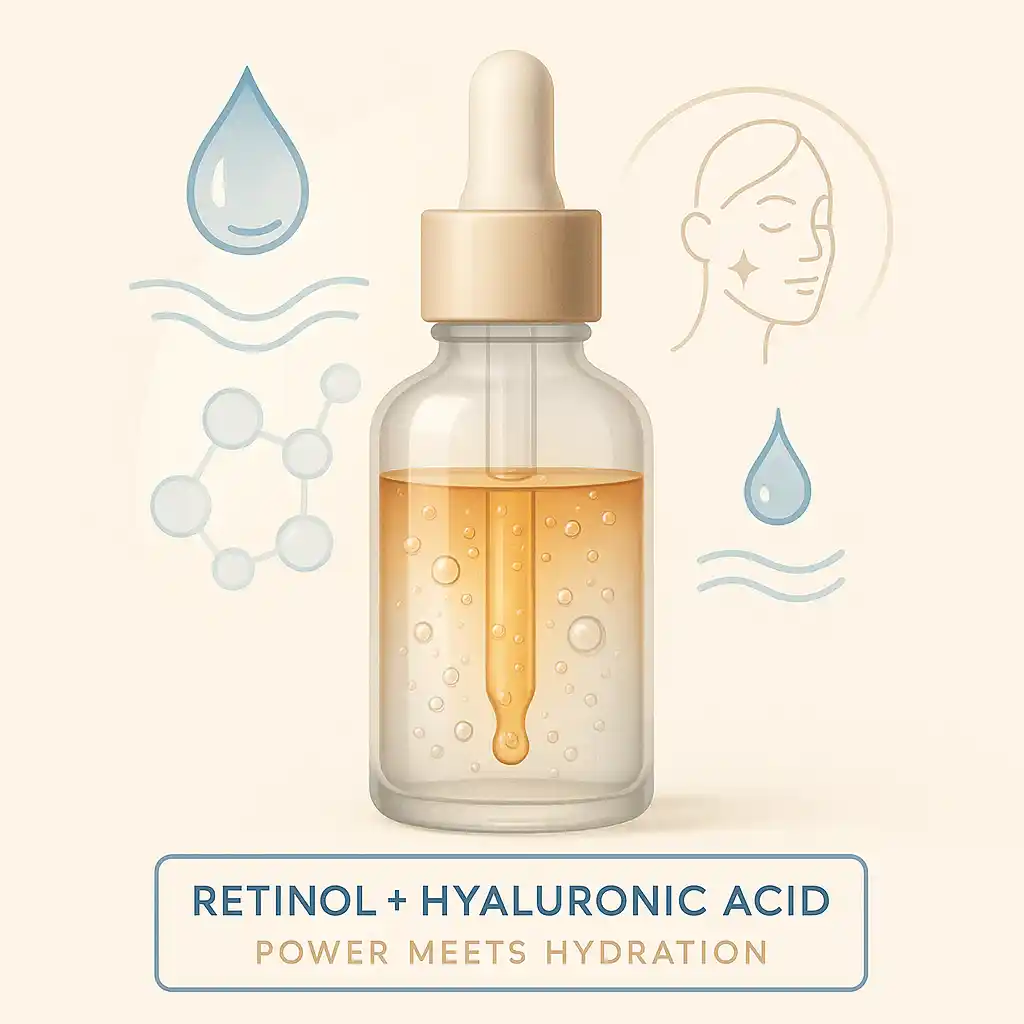
Since retinol can sometimes cause dryness, hyaluronic acid is a must-have in your routine. This ingredient attracts moisture to the skin, helping to keep it hydrated and plump.
When used after retinol, it ensures your skin stays moisturized and balanced, preventing irritation that might come from the drying effects of retinol. Think of it as a hydrating booster.
2. Peptides
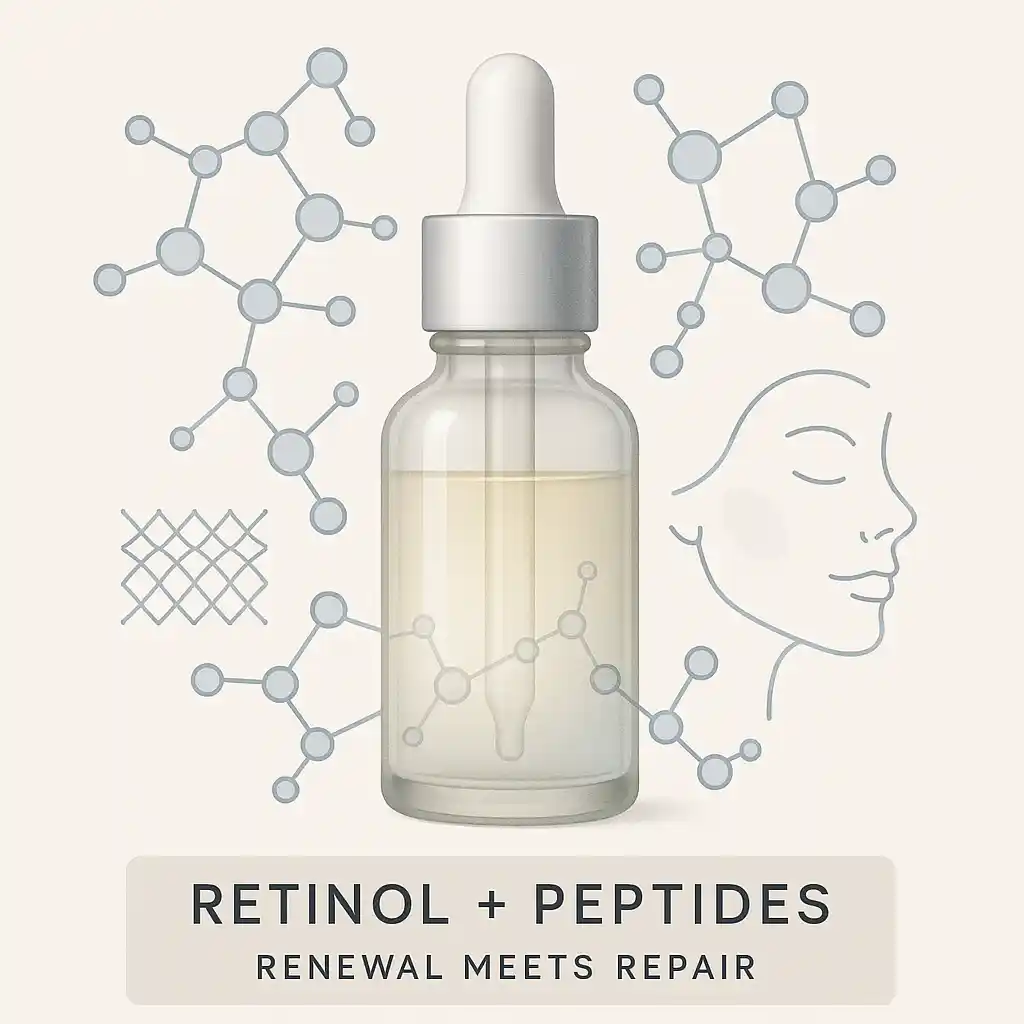
Peptides are another great match with retinol. They help to promote skin regeneration, making your skin more resilient and firm.
If you’re using retinol for anti-aging, adding peptides can enhance the skin-rejuvenating effects.
They work to rebuild skin’s structure and improve elasticity, making them an excellent complement to the cell-turnover benefits of retinol.
3. Vitamin C
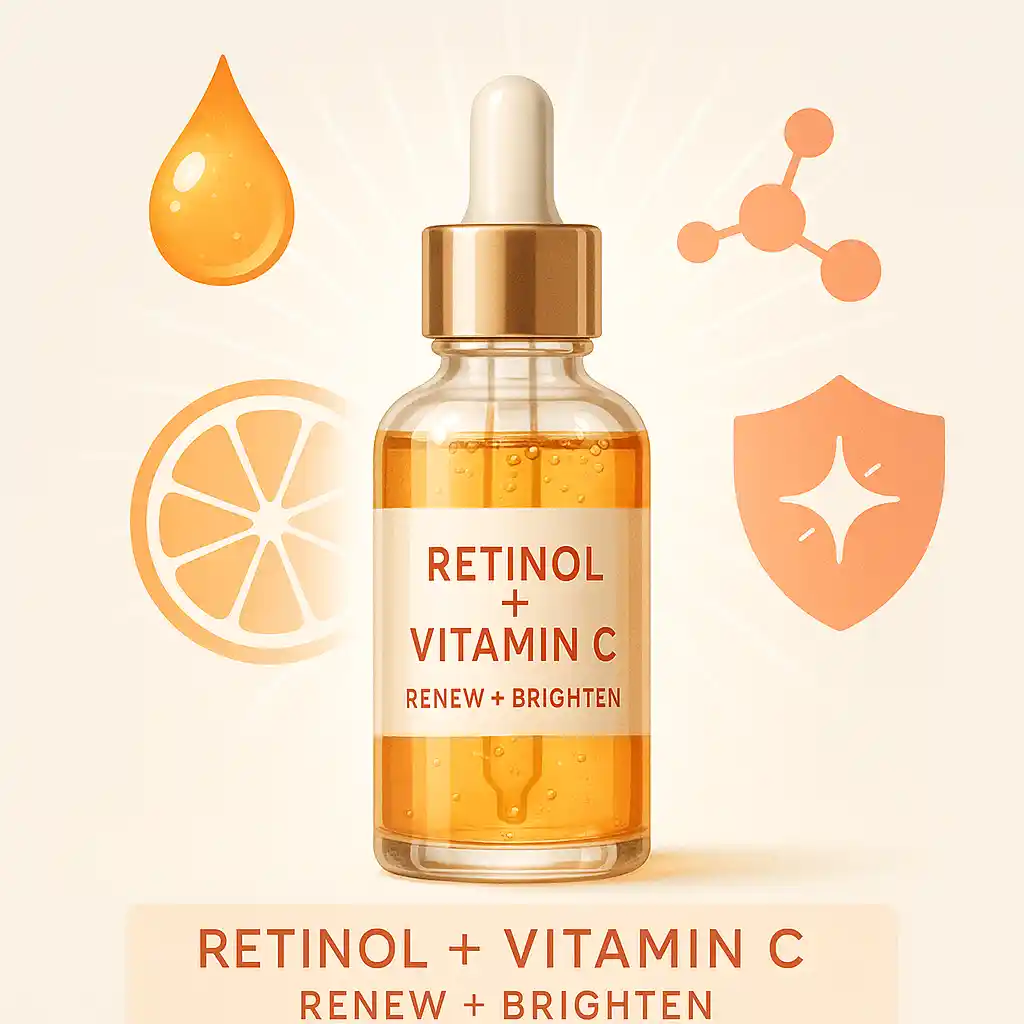
Vitamin C is best used in the morning, after your retinol routine at night. It’s an antioxidant that helps brighten the skin and fights free radicals, which can lead to premature aging.
Pairing Vitamin C with retinol provides a double punch: while retinol works on cell turnover, Vitamin C brightens and evens out skin tone. However, make sure to apply it during the day as it enhances skin’s sensitivity to the sun.
4. Niacinamide
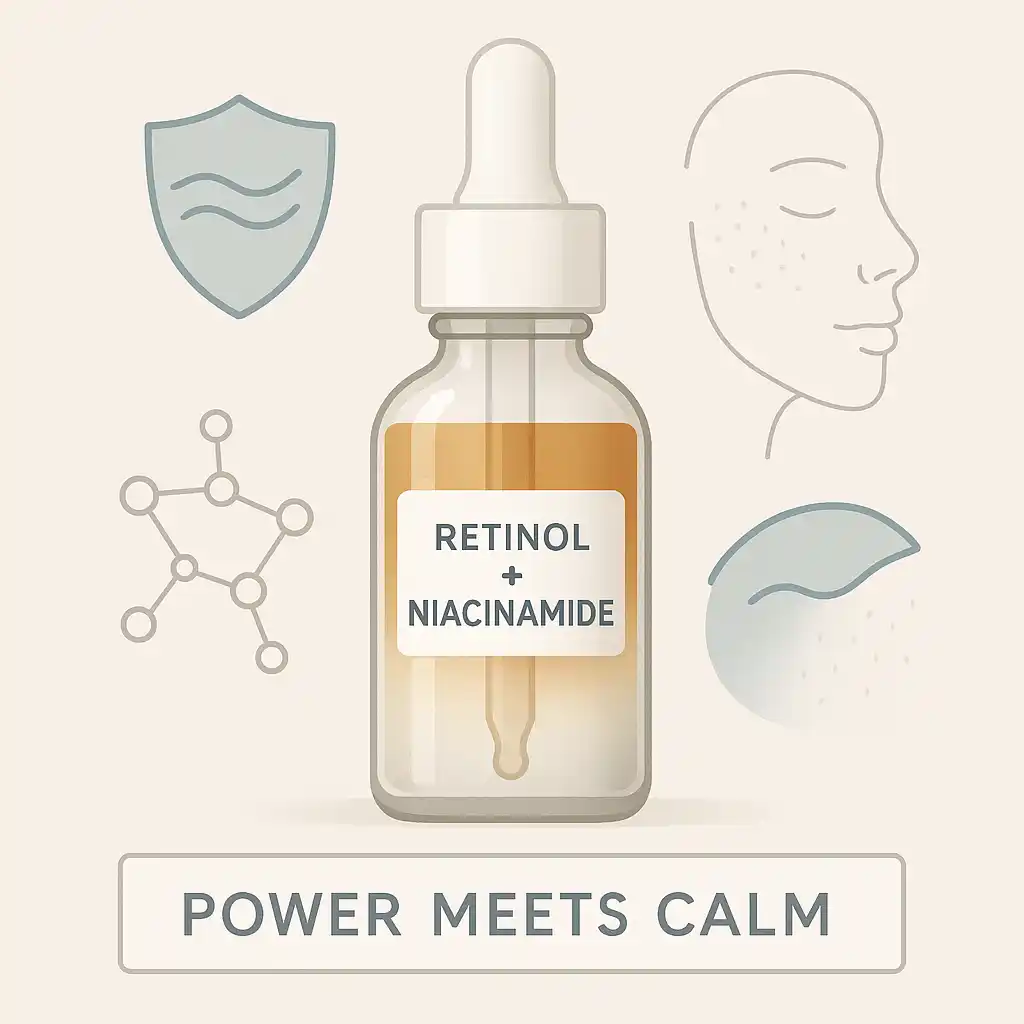
For those with sensitive skin, niacinamide is a great pairing. It reduces inflammation and redness, soothing the irritation that sometimes comes with retinol.
It helps your skin recover faster and boosts your skin’s barrier function, making it a perfect counterpart to retinol.
By combining retinol with these ingredients, you’ll not only enhance its effectiveness but also create a balanced skincare routine that supports healthy, radiant skin.
How Long Does It Take to See Results from Retinol?
Patience is key when using retinol. Typically, you’ll start seeing noticeable results after about 4 to 6 weeks of consistent use. During this time, expect smoother skin, reduced acne, and a more even skin tone.
However, if you’re using retinol for deeper wrinkles or hyperpigmentation, full results might take 12 weeks or longer. Don’t be discouraged if you don’t see drastic changes right away, retinol before and after results show gradual improvements over time.
Remember, how to use retinol is just as important as the wait. Always start slow to avoid irritation and build up your skin’s tolerance.
Some dryness or flaking is normal in the first few weeks, but as your skin adjusts, the irritation should decrease. Be consistent, and soon enough, you’ll see the benefits.
Tretinoin vs Retinol: Which One Should You Use?
When deciding between tretinoin vs retinol, it’s essential to understand the key differences and which one suits your skin type and goals.
Tretinoin, a prescription-strength retinoid, is more potent than retinol. It’s commonly used for severe acne, deep wrinkles, and sun damage. Tretinoin works faster, but it can also cause more irritation, especially for beginners. If you’re new to retinoids, it’s best to start with retinol to avoid excessive dryness or peeling.
On the other hand, retinol is milder and available over the counter. It works well for people with mild acne, fine lines, and uneven skin texture. Retinol is the perfect starting point if you’re unfamiliar with retinoid products.
If you’re looking for retinol before and after results, keep in mind that while retinol is slower to show visible improvements, it still provides effective, long-term results with less risk of irritation.
Retinal vs retinol is another comparison to note, retinal (also called retinaldehyde) is a more potent form of retinol but can be too harsh for some skin types.
Ultimately, if you want faster results for more advanced skin concerns, tretinoin is the way to go. But if you prefer a gentler approach, retinol will deliver smoother skin without as much irritation.
Common Retinol Myths Debunked
There are many myths surrounding retinol, which can make people hesitant to try it. Let’s clear up some of these misconceptions and set the record straight.
Myth #1: “Retinol makes your skin more sensitive to the sun.”
While retinol can make your skin more sensitive to the sun, it doesn’t mean you should avoid it altogether.
The key is to use retinol at night, and always apply sunscreen in the morning. This way, you get all the benefits of retinol without compromising your skin’s protection.
Myth #2: “Retinol causes irritation for everyone.”
It’s true that some people experience irritation when first using retinol, but this can be minimized by following the 1-2-3 rule for retinol, starting slow and gradually increasing frequency.
Using a moisturizer after applying retinol can also help reduce irritation. Over time, your skin will adjust.
Myth #3: “Retinol is only for aging skin.”
Many people think retinol is only effective for anti-aging, but that’s not true. Retinol is also great for acne, hyperpigmentation, and improving overall skin texture. If you’re struggling with acne or clogged pores, retinol can be a game-changer.
By debunking these myths, we hope you feel more confident in adding retinol to your routine and enjoying the glowing, smooth skin it helps achieve!
Retinal vs Retinol: What’s the Difference?
When diving into skincare, you may come across the terms retinal and retinol, and wonder how they differ. Both are forms of Vitamin A and have similar benefits, but there are key differences that make them suitable for different skin concerns.
Retinol is one of the most popular over-the-counter forms of Vitamin A. It’s milder and works by promoting skin cell turnover, which helps smooth texture, reduce fine lines, and clear up acne. It’s perfect for beginners or those who are just starting to incorporate retinol into their skincare routine.
On the other hand, retinal (or retinaldehyde) is a stronger form of Vitamin A. It’s more potent than retinol but not as widely used. Retinal vs retinol comes down to strength, retinal works faster in terms of delivering results, but it can also be more irritating to the skin. If you have sensitive skin, retinol is usually the better choice to avoid potential irritation.
If you’re comparing tretinoin vs retinol, tretinoin is another, stronger option, typically prescribed for severe acne and signs of aging. While retinol is great for general skincare, tretinoin is for more intense concerns.
So, which one should you use? If you’re new to Vitamin A derivatives or have sensitive skin, retinol is a great starting point. If you’re looking for quicker results and your skin can tolerate it, you might want to try retinal.
Wrapping Up: The Benefits of Retinol in Your Skincare Routine
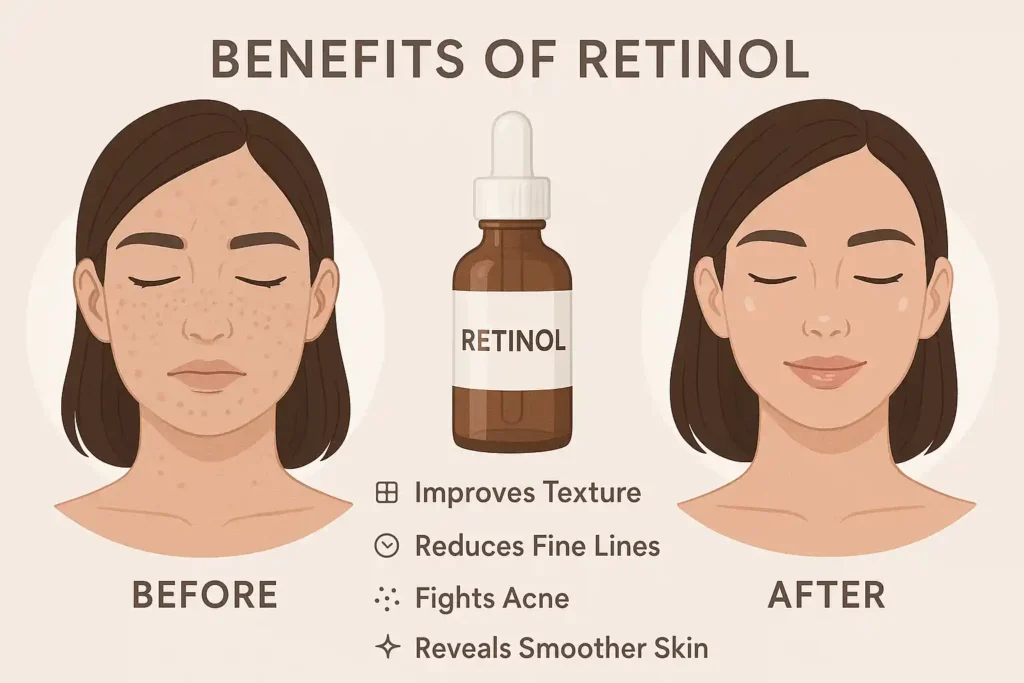
Incorporating retinol into your skincare routine can be a game-changer. Whether you’re aiming to reduce fine lines, improve texture, or combat acne, retinol delivers visible results over time. By promoting skin cell turnover, it helps reveal smoother, fresher skin.
As you’ve learned, how to use retinol properly is key to seeing its benefits without irritation. Starting slow, layering with moisturizer, and using sunscreen during the day will help you get the most out of it.
Don’t forget, the journey to glowing skin takes patience. With retinol before and after results, consistency is the key. Whether you’re starting with retinol or considering stronger options like tretinoin vs retinol, the right choice depends on your skin needs and goals.
Start slow, stick with it, and soon you’ll see why retinol is considered one of the best skincare ingredients out there.
You may also love to read this “Skinimalism 2.0“
Got questions?
Does Retinol Help with Dark Spots?
Yes, retinol is great for fading dark spots, hyperpigmentation, and uneven skin tone. It promotes skin cell turnover, helping your skin shed dead cells faster and reveal fresh, even-toned skin underneath. Over time, this can reduce the appearance of dark spots caused by sun damage, acne scars, or aging.
How Often to Use Retinol?
If you’re new to retinol, start by using it once or twice a week. Gradually increase the frequency as your skin builds tolerance. Eventually, you can use retinol nightly, but always pay attention to how your skin responds. The key is to build up slowly to avoid irritation.
Can You Use Retinol with Hyaluronic Acid?
Absolutely! Retinol can be drying, so pairing it with hyaluronic acid is a great idea. Hyaluronic acid hydrates the skin and helps lock in moisture, reducing the irritation that sometimes comes with retinol. Just apply retinol first on clean skin, then follow up with hyaluronic acid and a moisturizer.
How Long Does Retinol Take to Work?
The effects of retinol aren’t immediate, but with consistent use, you can start to see noticeable results after 4-6 weeks. Expect smoother skin, reduced fine lines, and fewer breakouts. For more significant concerns like deep wrinkles or hyperpigmentation, it may take up to 12 weeks for full results.
Is Tretinoin a Retinol?
Tretinoin is a type of retinoid, just like retinol, but it’s much stronger. Tretinoin vs retinol comes down to strength, tretinoin is prescription-only, while retinol is available over-the-counter and is milder. If you’re looking for faster results for more severe skin concerns, tretinoin might be the better choice, but it can be more irritating.

Pingback: Top 10 Best-Selling Skincare Products on Amazon USA in 2025
Pingback: Skincare for Anti Ageing: Dermatologist-Approved Routine